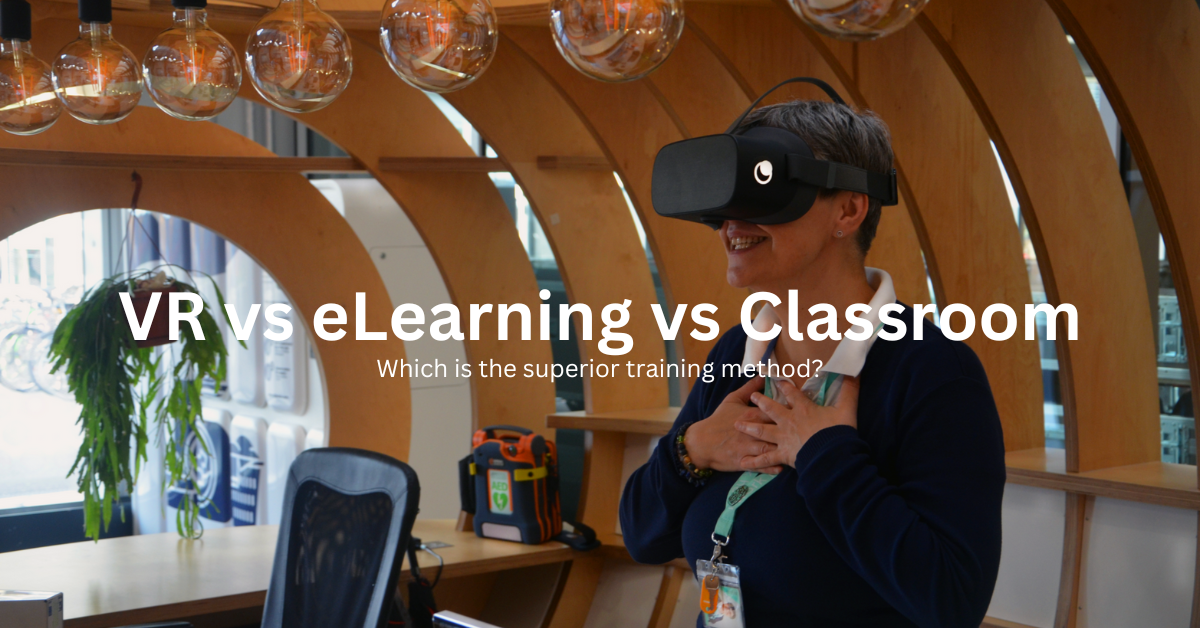
VR training has proven to have a higher engagement and concentration rate in comparison to traditional training methods which include eLearning and Classroom. As a result of a low focus rate, learners are less confident when applying the skills they have been taught thus reducing the effectiveness of traditional training methods. Many benefits come from VR training and its reduction in the time to train learners is only just one of them.
How VR transforms training

VR has many advantages including its ability to let learners transform their surroundings into typical work-life scenarios. Learners are 3.75 times more emotionally connected to the content than classroom learners and 2.3 times more than e-learners. Immersing users in a full-on sensory and emotive experience, VR has the power to appeal to our humanity and activate a greater sense of empathy. To add on, new learners who were trained through VR were 275% more confident to apply new skills – 40% more than e-learners and classroom-based learners. DHL Express uses VR training in their Unit Load Device for stacking and safety where 90% of employees said VR training is helping them improve efficiency and work better. VR training has been proven to be 4 times faster to train compared to traditional training. Learners are also 4 times more focused and engaged due to its interactiveness and visuals.
eLearning and it's disadvantages
Like VR, eLearning is accessible anywhere, however, many disadvantages come with this method of learning. eLearning has a lower engagement rate as it has less social interaction and requires higher levels of self-motivation to produce better results. eLearning also requires additional training for instructors which increases costs and time due to the need for training.


The disadvantages of classroom training
Classroom training methods provide zero flexibility, disallowing learners to confidently recover their training in the comfort of their own time and environment. Learners are less likely to be focused due to the many distractions that come with classroom training such as background noise, therefore resulting in a lower retention rate. According to the Baylor Health Care System, VR-trained students showed a 250% improvement in their ability to accurately complete a safety procedure due to its immersiveness and intractability.
With VR training your attention is absorbed by 360 simulations. There is a limited chance of distractions you might associate with a classroom-based learning environment. Overall, VR training is more cost-effective at a grander scale, with the reduction or elimination of the need for expensive equipment to be used, and the travel costs for both the instructor and learner as well as the costs for an instructor/s to carry out the training. VR training is also more time efficient. With more time spent on upskilling whilst reducing the time to onboard and complete the skills training as well as reducing the skilled labour gap.
VR training has the highest projected potential for growth whilst Improving outcomes like worker safety, company culture, employee engagement, and higher efficiency. VR training is also said to be 83% less expensive and 50% faster than traditional in-person simulation, benefiting both the learners and teachers.
Get in touch with us to transform your learning via Virtual Reality today!








